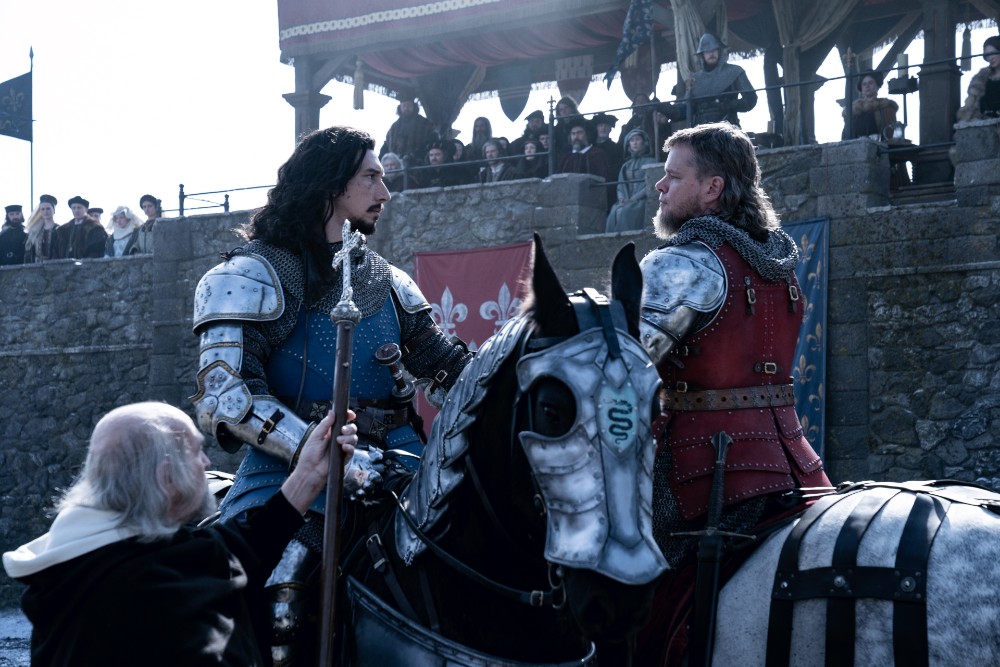
If there’s one thing that can be said about Ridley Scott’s movies – regardless of whether you appreciate their subject matter or cast or anything else about them – it’s that they look damn good.
In recent years, much of that came down to Cinematographer Dariusz Wolski, a veteran of 35 years who got his start in music videos during the ‘80s – you’ve seen his work, trust us – before transitioning to action movies in the ‘90s. That has led to a long run working with directors like Gore Verbinski, Tim Burton, and others, before becoming Scott’s go-to DP.
Last year, we were lucky enough to get two very different Ridley Scott films, both shot by Wolski – The Last Duel, a 14th Century French #MeToo epic based on a true story and starring Matt Damon, Adam Driver, Jodie Comer, and Ben Affleck, and House of Gucci, a drama about the famed fashion empire with Driver, Lady Gaga, Jared Leto, and Al Pacino.
Below the Line spoke with Wolski a little over a year ago for the Western News of the World, for Director Paul Greengrass, for which the Polish cinematographer received his first Oscar nomination. We had another chance to speak with him a few months back, mostly focusing on his most recent work with Scott with the Napoleon historical drama Kitbag with Joaquin Phoenix and Vanessa Kirby being next. Although our conversation side-tracked a bit into the 3D craze from a decade ago, we eventually got back on track, discussing their distinctive way of working and how COVID affected the productions.
RELATED STORY: The Crow DP Dariusz Wolski Shares Thoughts on Rust Shooting
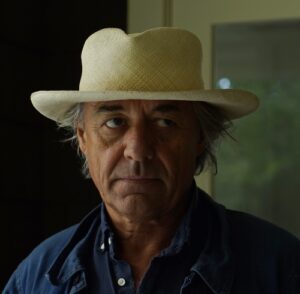
Below the Line: Thanks for taking the time to talk. I know you’re one of the busiest men alive, but I’m a fan of all your work with Ridley Scott, who you’ve been working with for ten years or more.
Dariusz Wolski: I’ve lost count, but the first movie I did with him was Prometheus. I think it was 2010 or something? I’m not sure.
BTL: Like Composer Harry Gregson-Williams, you also worked with Tony Scott well before that.
Wolski: A long time ago, yeah. Tony actually gave me, like, one of the big breaks. I did two movies when I worked with Tony for the first time, and it was kind of sink or swim, because all of a sudden, it was big-time [with] lots of cameras, a lot of action. It was Crimson Tide, so that was quite a challenge, and that was like living up to the people that I’ve admired, and it was great — I learned a lot from him.
BTL: What was your first meeting with Ridley like for Prometheus? You had a nice amount of work before then, so he must have known that you shot a great-looking film.
Wolski: With Ridley, the whole thing was about 3D, because there was this whole craze about 3D. I did Alice in Wonderland with Tim Burton, which wasn’t physically 3D, but this was just after Avatar, and there was this complete madness that 3D is the future, which we never quite believed in it, but we were kind of going with the flow. In the end, after numerous tests, we ended up dimensionalizing Alice in Wonderland — it wasn’t a native 3D. But it was 3D nevertheless and made a billion dollars, so of course, people don’t know if it’s [native 3D] or not, because it made a billion dollars, so the whole thing was about 3D.
The next thing is Pirates 4, and Producer Jerry Bruckheimer says we’re going to shoot it in 3D. I already knew about all the difficulties, because we’ve done a lot of homework. It was a huge experiment and huge taking chances, because it was fully live-action, because Avatar and Alice were semi-animated. While I was doing Pirates, Ridley approached me and wanted to meet me, so I just met him and he says, “What about this 3D stuff?” So I just told him what’s wrong with it, and what’s right with it, and he said he had this project and if I wanted to do this movie with him, and I said, “Sure.” That was it. So the excuse was kind of 3D, but we just got along and just kept working.
BTL: It’s been a while, but I don’t remember Ridley doing any 3D movies, either native or converted.
Wolski: No, they were all native. Prometheus was 3D, Exodus was 3D, and The Martian was 3D. It’s funny how quickly one forgets the whole pain we had to go through, shooting 3D. It’s so funny, because we knew this was going to go away. We knew it, deep inside, but that was the craze. That’s the producers thinking they’re going to make more money, there was an excuse to raise ticket prices, and this whole thing faded away very quickly.
BTL: As a film viewer, I did enjoy 3D, and I also got to visit a few sets where they were filming in 3D, which was always interesting, but you’re right that it was a fad or crazy that kind of ended.
Wolski: Actually, Ridley did say it after showing Prometheus, he said, “We’re filming 3-dimensionally anyway, because it’s just composition, lighting, framing… Renaissance paintings were three-dimensional, and you didn’t have to wear glasses to see them.” But thank God, it’s over. Let’s talk about something else. [laughs]
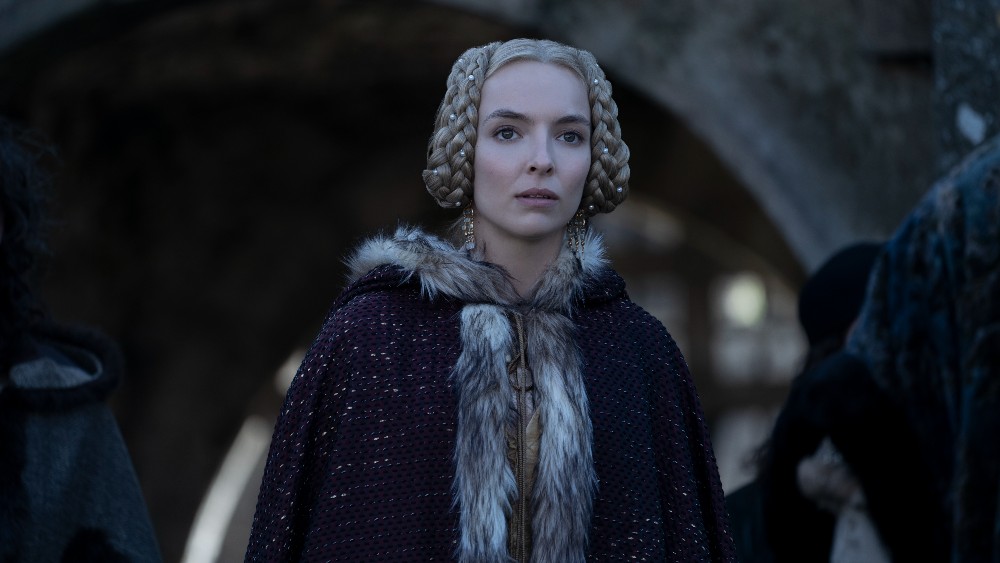
BTL: Okay, let’s talk about The Last Duel and House of Gucci.
Wolski: 2D! Both of them were in 2D. [laughs]
BTL: You’ve been through so much with Ridley from having to replace Kevin Spacey in a movie, and then you went into making a movie with him that was shut down due to COVID. How far were you into The Last Duel when the latter happened?
Wolski: Fortunately, half of the movie was shot in France, because of the locations, because we needed real 14th Century castles. Most of it was shot in Dordogne, which is the southwest part of France where Ridley shot his first-ever film called The Dualist with Harvey Keitel. We actually went to the same locations, and he was reminiscing how everything changes 40 years later, but the locations stayed the same, so that was pretty amazing. While we were shooting it, the whole COVID has started slowly because we started in January, and in March, the whole thing started happening.
I remember, in the beginning of March, Mission: Impossible 7 was shooting in Italy, and they had to shut down, because Italy was hit first. Because we were in France, everything was okay, and then the whole thing slowly started. Ridley was very aware of it, that this can turn very bad, so we kind of pushed through. We managed to do everything that we had to in France. We were supposed to go to Ireland to continue our stage work and some locations. It was Thursday, March 12, and when we woke up in the morning, everyone was still flying by charter plane to Dublin, but we just decided to shut down, because France was getting bad, England was getting bad, and there was a fear about shutting the borders and stuff. We got on the charter to Dublin and by the time we arrived in Dublin, I had a ticket to Los Angeles.
I think Matt Damon decided to stay there, because he thought this whole thing is not gonna last that long, so he stayed. We all had beautiful houses rented in Dalkey, which is a small town near the stages, and bulky, which is a small town near the stages on the seat. Matt, who was there with his whole family and teachers, he decided to stay, which was smart. I was by myself, so I just went quickly back to LA to see my family. We stopped, and the whole world has stopped on the famous March 13 when everything stopped. Everyone was in lockdown, and we went back around September, and Ireland was pretty good, we came back and finished the film there. It was very special, because when you come back after lockdown when the whole world has stopped, just going back and being able to work. Everyone was so happy to work.
BTL: Since you were doing more stage work in Ireland and presumably, it was fairly isolated, it was easy to create the needed bubble?
Wolski: Yes, the whole crew was in one hotel in the bubble, or in small houses in Dalkey, a small sea town. We just worked and stayed home and ordered food delivered from the restaurants. That was the only thing we could [do]. Actually, we could just walk on the beach and stuff, because there was nobody there, but that was it. Everyone was very, very vigilant. We were tested three times a week, and everyone was in bubbles. Ridley and I had this trailer with all the monitors where we could control multiple cameras, like a command center. We put a little Plexiglas between each other, so Ridley had his own space by himself, and there was just me and the DIT in the room, and we were communicating by hitting the glass and sign language. We could speak — there was a bit of an intercom, but most of the time, we were just using sign language. And then we came on the set, and usually, the crew leaves. It’s Ridley and the actors with masks and me in the corner, and then the actors leave, the crew comes in, Ridley goes back. I was probably the one more between everybody, and the assistant director, so when the crew comes in, they would do the lighting, set up the cameras, and then leaves except the operators and essential people, and then the actors came in, and we shot. We developed this respect and discipline, and it does work.
BTL: I’m certainly glad you kept Ridley safe. It’s amazing that he’s making so many great movies at his age, especially during a COVID pandemic.
Wolski: But he’s really, really, really strict about respecting the COVID regulations, and he’s just very conscious of it. Whoever doesn’t comply with the rules is just put aside, and the set is run very, very strict.
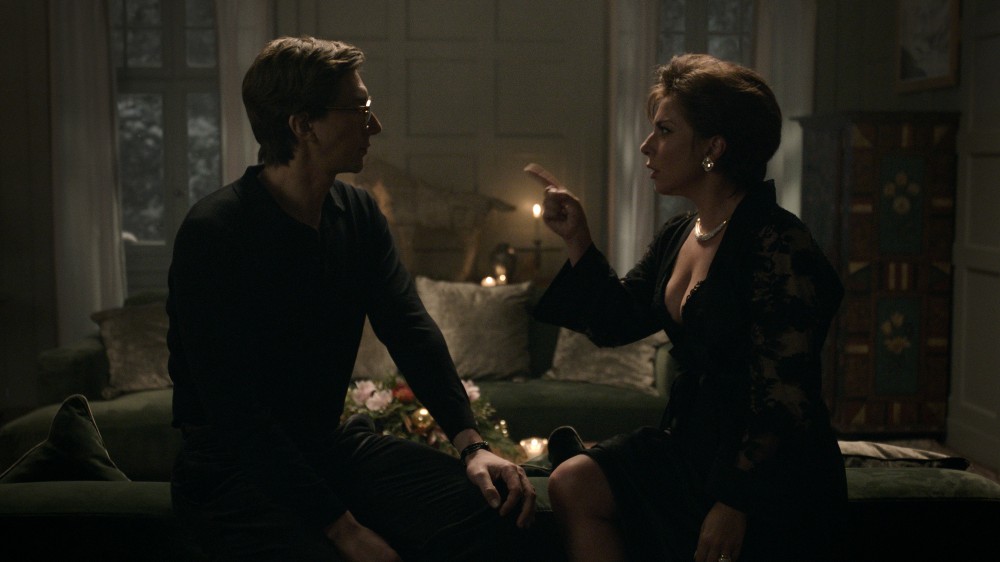
BTL: Were you able to use a lot of the same camera team between the two movies?
Wolski: To a degree, because we usually use multiple cameras, pretty much four cameras all the time. There were two key operators. One was from the States, James Goldman, so he was in France and Ireland, and then I brought an Irish operator to France to have a continuity and used two French operators.
When we came to Ireland later, unfortunately, my Irish operator took another TV movie or something, so I had to recruit somebody else. I had one key operator, my English gaffer Perry Evans was with me in both places. The grip, we used a French grip in France and a great Irish guy in Ireland, so there was continuity. My original focus puller, my “A” focus puller was through the whole film, and then I remember when we came to Ireland, I brought one focus-puller from France, just to have continuity.
The tricky thing is that we work four cameras, and it’s kind of complex, and there’s a system that a lot of people are not used to, so it’s good to have people who have done it before, and then everybody else catches up as quick as they can. I always travel with my DIT from the States, he travels and goes through, so you try to keep continuity as much as you can.
BTL: While you’re prepping for House of Gucci are you still involved with the post or DI on The Last Duel? How much overlap is there between the two movies?
Wolski: Not too much. It wasn’t bad, because I could do the color grade on The Last Duel when I was done with House of Gucci. What happens is that my DIT, we create those color files — the movie is basically colored while we’re shooting, so the idea is there, and then the whole thing goes to Stephen Nakamura, and he basically looks at our dailies that are pretty much what we want it to look like, and all he does is just puts up both windows and just massages the whole thing. The first couple of weeks, Stefan is doing it by himself, based on whatever we give him, and then Ridley looks at it, I look at it, and he just massages the whole thing.
DI is not that complex. Having Stephen, of course, helps a lot, and having my DIT on the set that we just basically color grade from. The DI is not such a tremendous process anymore. And also, the more you do digital stuff, the less you want to interfere. I always go back to when we used to do a film negative, and the way you were interpreting it was basically looking at it from live speed with a bit of footage captured on the screen, and you’re making comments about what the film should look like — too green, too blue, too dark, brighter — and he had to do it on the fly. Those guys were amazing. There were three filters — red, green, and blue, or yellow, magenta, and cyan — and they were color-correcting the whole film.
You learn to look at the whole film rather than analyzing every frame, because technology is there, and you can isolate everything. You can window everything. You can do so many things that you get lost with this stuff. You can just keep going and going forever, and you just have to understand how the whole film flows. We always allow Stefan to do all his work first, and then we just watch the film and whatever jumps out, whenever we want to change [something] — it’s just like stepping back from the painting basically.
BTL: Are you able to do that on the other films you shoot when you’re not working with Ridley, or is that something very specific you two do?
Wolski: No, I use Stephen Nakamura for all my movies, even before, so we have a shorthand, too. It’s like a big triangle, so if another director comes in, I still use Stephen, so it’s the same process.
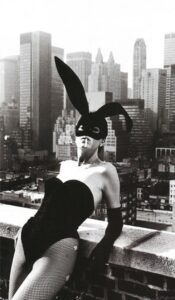
BTL: I want to talk about House of Gucci now, which is set in Italy, and it’s a period movie that covers a number of decades. Are you watching a lot of other movies for reference beforehand? It reminded me a bit of a Fellini movie, at times.
Wolski: Yeah, at the beginning… I mean, it was both of us, Ridley and I. We just grew up on the Italian movies, and there’s a certain charm about [them]. It’s not even Fellini. It’s a little Fellini, it’s a bit of neorealism. The whole opening scene with the trucking company is very much based on old post-war Italian movies. It was called Italian neorealism, right? It was the trend at the time of Vittorio De Sica. It was showing under the freeway, dusty, brand-new buildings. It’s not this glamorous Italy with old ancient buildings. We just show this underbelly of Italy, and where she comes from. And then, of course, you have the countryside, Tuscany and the whole thing. It’s hard not to think about Fellini and all the great Italians while you’re there shooting stuff.
At the same time, our key inspiration was William Klein, the still photographer. He’s a famous fashion photographer who started in the ’50s and ’60s. When he came to the ’70s and ’80s, he started shooting a lot of the underbelly of fashion. They were backstage, the girls dressing up. Nothing was perfect, like grainy black and white, rough. More about energy than just the glamour of fashion. We were trying to have both with a bit of glam and the underbelly of fashion, and that’s why we go black-and-white here and there in the film, because Klein’s pictures were black-and-white. There’s also one-quarter of a Helmut Newton shot when they come to New York, and she steps on the balcony, and he takes a picture of her. It’s a complete replica of the famous Helmut Newton shot. I think it was a Playboy bunny against the Chrysler Building. We were completely conscious of all the photography from this era, so we were trying to put that a little bit into the game. The fashion shows were actually exact replicas of existing fashion shows, the Versace and the first Tom Ford show, which was pretty much verbatim what it looked like.
BTL: I’m not really that familiar with the fashion world, so I’m sure some people will appreciate or get those references more than I will.
Wolski: You make a movie in space, you make a movie in 14th century France, so you just do your research. We’re so lucky that we can go from 14th Century France with all its references, and then go to the fashion world in the ’70s and ’80s. That’s just how lucky we are that we can jump from one place to another, and then go to Mars for a minute.
House of Gucci is still playing in quite a few theaters nationwide, while The Last Duel is available on most digital and VOD platforms, and it’s also now playing on HBO Max. You can also read Below the Line’s earlier story with Wolski talking about his early experience filming The Crow, on which actor Brandon Lee was shot and killed, drawing parallels with the more recent shooting of DP Halyna Hutchins on the set of the Western, Rust.
All House of Gucci photos courtesy MGM/U.A. Releasing, The Last Duel photos courtesy 20th Century/Disney. All other photos are courtesy of the respective copyright holders as listed.





